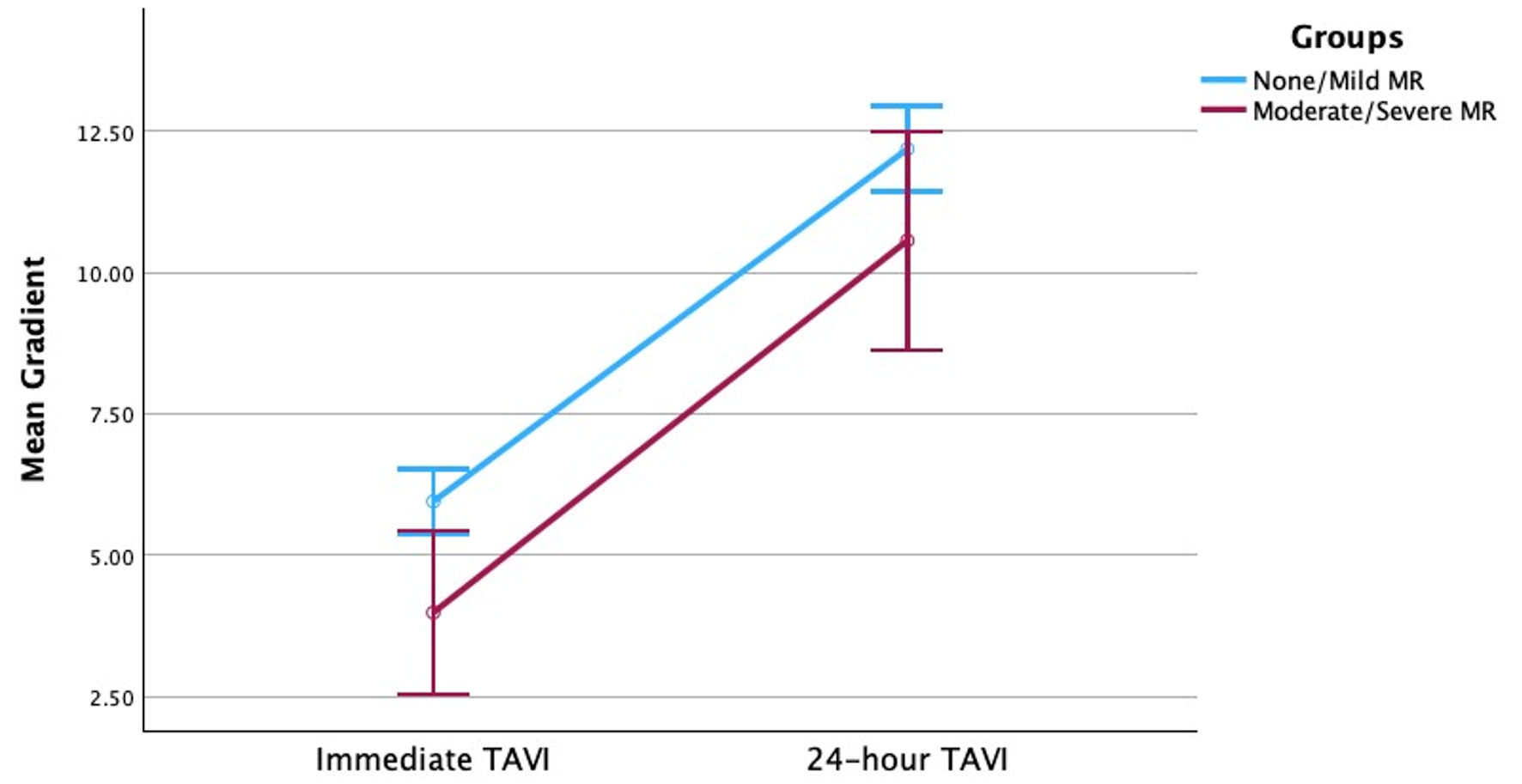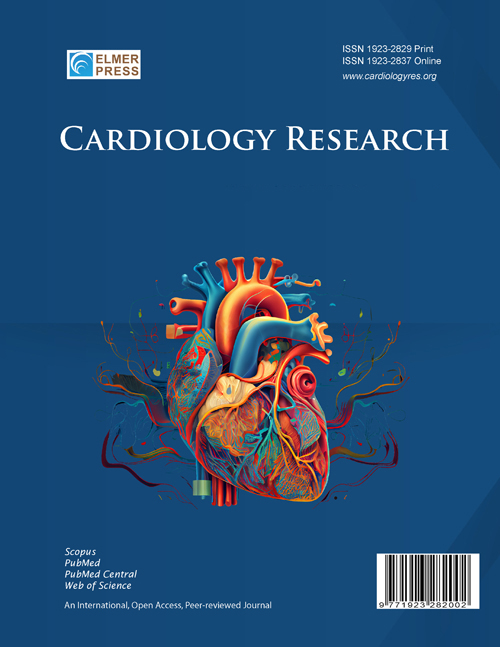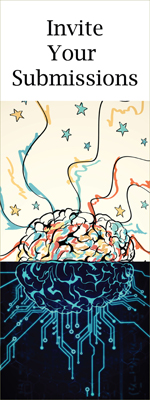Increase in Aortic Valve Mean Gradients One Day After Transcatheter Aortic Valve Implantation: The Role of Mitral Regurgitation
DOI:
https://doi.org/10.14740/cr2086Keywords:
Transcatheter aortic valve implantation, Transvalvular gradient, Mitral regurgitationAbstract
Background: Following transcatheter aortic valve implantation (TAVI), transvalvular mean gradient is known to increase from immediate to 24 h post-procedure. While anesthesia, rapid-pacing, and volume status are blamed, the true etiology is unclear. To our knowledge, no prior studies have evaluated the effects of mitral regurgitation (MR) on the rise in post-TAVI transvalvular mean gradient.
Methods: A single-center, retrospective analysis of patients who underwent TAVI at our institution between 2011 to 2020 was performed (n = 378, males = 206). Patients were divided into two groups, no-to-mild MR (n = 327) and moderate-to-severe MR (n = 51) based on echocardiograms obtained prior to TAVI. Transvalvular gradients were compared between immediate and 24-h post-TAVI echocardiograms.
Results: The average age of no-to-mild MR patients (77 years (interquartile range (IQR): 71 - 84)) was similar to moderate-to-severe MR patients (79 years (IQR: 76 - 85), p=0.13). Both groups had similar procedural blood pressures and peri-procedural medication use. The change in 24-h post-TAVI mean transvalvular gradient was +6 mm Hg (IQR: 3.7 - 9) in the moderate-to-severe MR group and +6 mm Hg (IQR: 3.4 - 9) in the no-to-mild MR group (P = 0.87).
Conclusions: In this study, we evaluated the impact of preexisting MR on changes in transvalvular gradients following TAVI. We observed no statistically significant difference in 24-h post-TAVI gradient changes between patients with moderate-to-severe MR and those with no-to-mild MR. These findings suggest that baseline MR may not be a major determinant of early post-TAVI hemodynamics; however, further prospective studies are needed to confirm this observation.

Published
Issue
Section
License
Copyright (c) 2025 The authors

This work is licensed under a Creative Commons Attribution-NonCommercial 4.0 International License.









